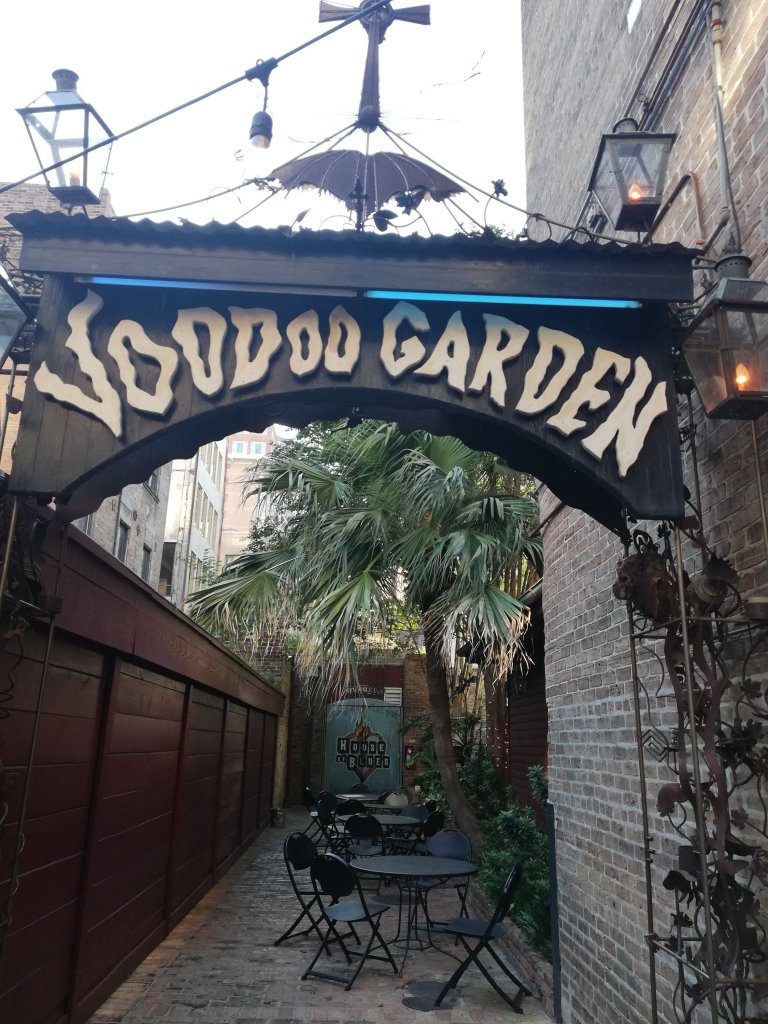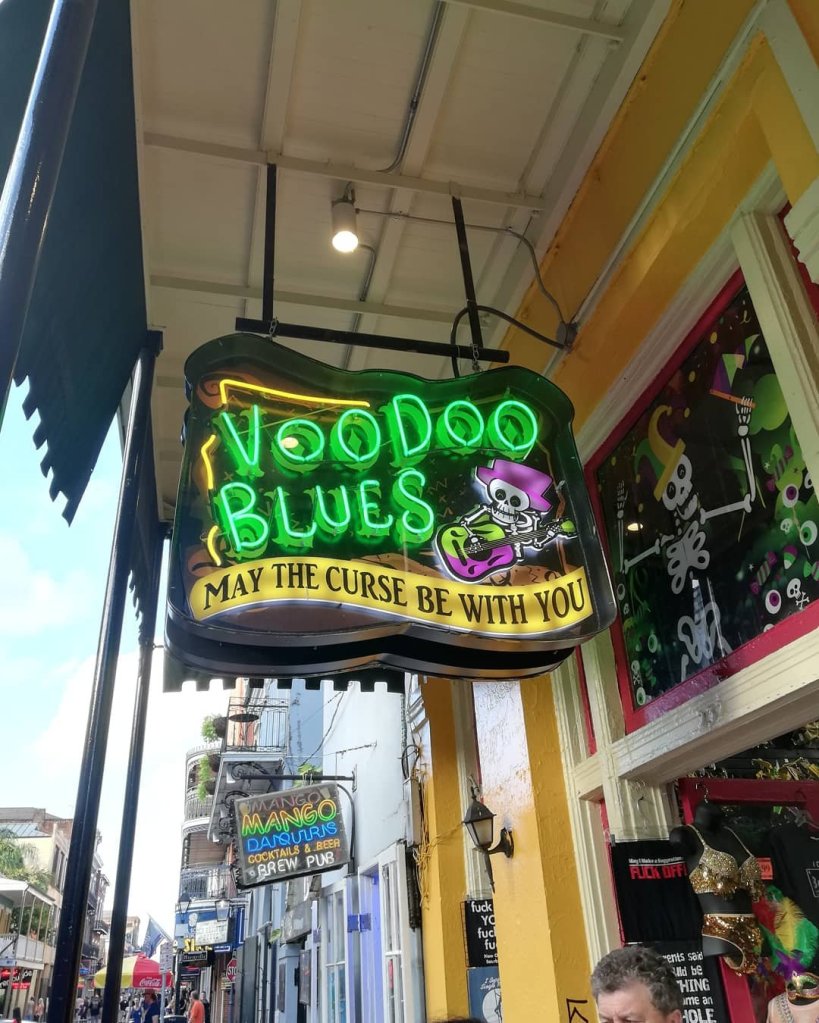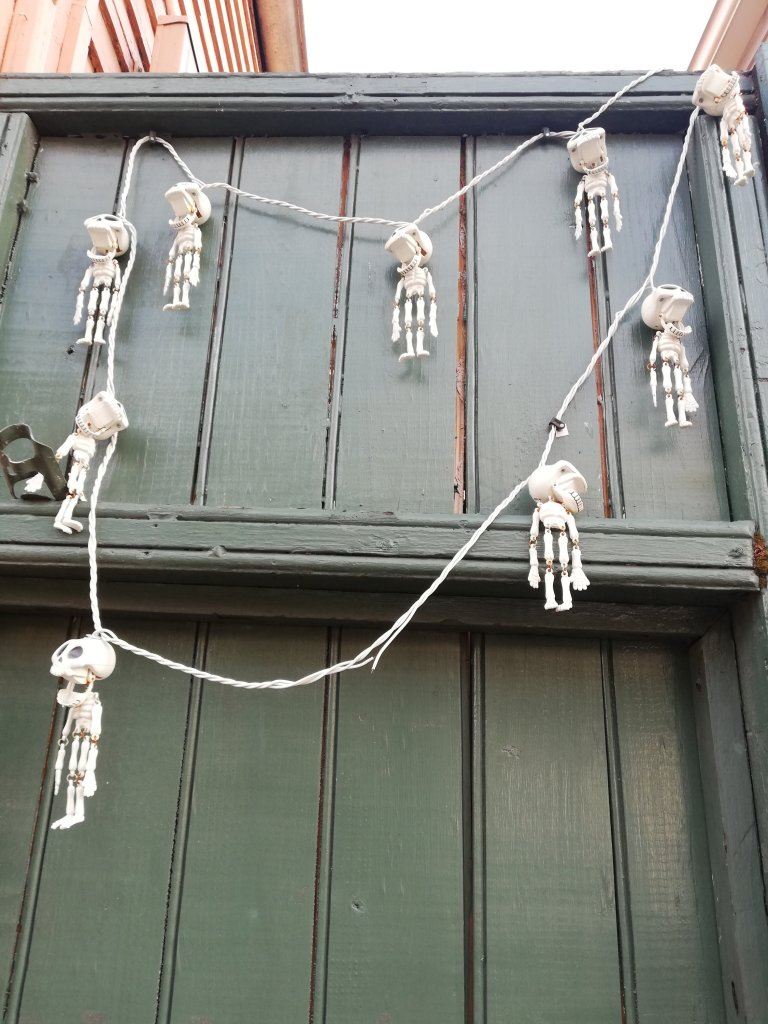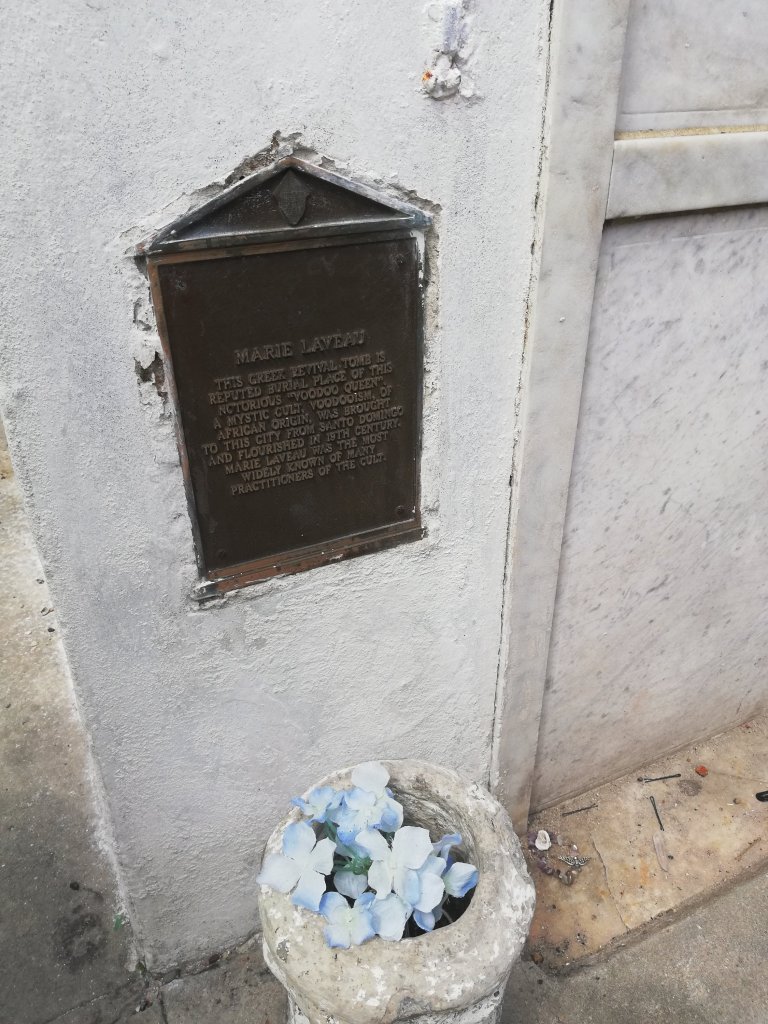A sentence you don’t often hear, unless you’re a Voodoo priestess, I suppose.
Or from New Orleans…

So, as you may have seen in my last blog post, I spent seven fascinating days traipsing around the delectable, raunchy New Orleans.
When I visited, I hadn’t planned on learning a shit-ton about Voodoo. It just kinda happened, and I’m glad it did.

New Orleans, for those not yet acquainted with its charm, is famous for a lot of things (crawdaddy Ètouffèe, anyone?) and the city is arguably nothing without it’s strong relationship with Voodoo and Hoodoo culture. Now, what do Voodoo and Joan Jett have in common? They both have a bad reputation! *ba-dmm-dmm-tsk* (I’m not even sorry for that horrendous joke.)
But seriously though, voodoo isn’t all hexes, chicken sacrifices and sticking pins into a doll wrapped in the hair of your foe. I mean, it is that for a small minority who are a bit bonkers, but it’s also something much bigger and better. Let me be clear: Most of what you see in mainstream media is not an accurate representation of Voodoo. At best, it is misconstrued myths and clichès balled up into one big lump of skulduggery.
Also, another thing: Voodoo and Hoodoo – not the same thing.

The Origin of Louisiana Voodoo
Like most religions, Voodoo is both simple and complex at the same time. There is also more than one type. For example, Haitian Voodoo and Louisiana Voodoo, which aren’t the same.
No one really knows how old Voodoo is. Historians suggest it developed somewhere between the 16th century and the 19th century (vague flex, but okay.) What they do know about it is that it stemmed from either Central or West-Africa and made it’s way to America during the Colonial era.
But what is it? Well, simply put it’s a marriage between ancient African herb-based traditions and good ole-fashioned Catholicism. Anyone familiar with Louisiana will know it is a heavily Catholic state. Rosary beads and Hail Marys flung about all over the shop. It makes sense, considering New Orleans is a mass fusion of cultures that largely adhere to the Catholic faith.

Louisiana Voodoo dates back to 1719. Louisiana state, at the time, was largely occupied by the Louisiana French and the Louisiana Creole (both still very much a part of what makes New Orleans culture what it is, and heavily influences of food the city is famous for) but the unpleasant truth of it is that Voodoo came to New Orleans by way of the slave trade. There’s no glamour and mystery behind that element. It is a bi-product of an ugly mark on history. The captives, who were big on worshipping deities and ancestors, were forced to forsake their own personal beliefs and take on Catholicism as their one and only faith. Understandably, their general reaction was a quiet ‘Sod That‘, but it was done so in a way that wouldn’t cause them or their families any trouble, and thus an immersion began of the two religions. It’s said that each had notable similarities, which is what allowed Voodoo, as we know it, to form and largely go undetected until the abolition of slavery.
Key Elements
While one of Voodoo’s many misconceptions is the invocation of black magic. Louisiana Voodoo is primarily the connection we have with nature. It requires the use of herbs, potions, charms and amulets (particularly protection amulets, which are better known as gris–gris.) Louisiana Voodoo paraphernalia include bones, roots, herbs, Holy water, crucifixes, incense, and even Holy bread, and a lot of rituals or ‘spells’ invoke protection from Jehovah, the saints, Mary, and Christ, himself. Another thing most folks don’t know about Voodoo is it involves a LOT of dancing. I’m talking conga lines for days.
Voodoo dolls

We’ve all heard of them. A few of us even have them (not mentioning any names… ahem.)
They are sometimes odd and rather creepy-looking, but here’s the thing about Voodoo dolls: they are not designed to cause harm. Quite the opposite. Unlike what popular culture will have you believe, the doll isn’t supposed to be an effigy of your ex/school bully/dickhead neighbour in which you stick pins into to inflict torture, or even kill. Nope. Not how it works. Or it can work like that, if they fall into the hands of those hell-bent on misuse or abuse. They are designed to represent someone wounded or ailed, diseased or dying, and are personalised by something like a strand of hair or a piece of their clothing/jewellery. The pins (usually saturated in healing herbs or balms) are then inserted into the offending area, or the entire body of the effigy, if said person is riddled with disease. As I’m sure you can imagine, you can get them all over New Orleans, in all different shapes, sizes or colours – but they ain’t cheap.
Or you could always make one yourself…
Sisters are Doing it for Themselves
The cool thing about the Voodoo movement is, even during it’s infancy in Louisiana back many, many moons ago, female practitioners (AKA priestesses) were very well regarded, and were powerful within their community. And these weren’t white women. They were women of African and Creole descent, and their presence was respected within both black and white communities alike, even during a time of great civil unrest. Go girls!
Marie Laveau
It’s not humanly possible to talk about Louisiana Voodoo without mentioning the legendary Marie Laveau. It’s just not possible. It’s also not possible to spend time in New Orleans without seeing and hearing her name pretty much everywhere you go. She is a huge part of the culture there. She wasn’t just a Voodoo priestess, she was known as The Voodoo Queen.
Born in the French Quarter of New Orleans in 1801, of African, Native American and French descent, she was known as a community activist, as well as an established herbalist and healer. She was also a midwife, businesswoman, and something of a socialite. She owned a hair salon that catered to well-to-do white Southern ladies, and she used the gossip she heard to establish herself high in the ranks of respect within prominent white circles by various means necessary. A lot of folks came to her for advice on business or political ventures, or simply for medicinal or midwifery reasons – and she is said to have seen everyone, regardless of their wealth, status or origin. She is also rumoured to have had up to fifteen children in her lifetime, so she was a busy gal.
While many figures in history are shrouded with mystery and oftentimes, controversy, what makes Marie Laveau cool was that she was a pioneer during a time in history when women, and particularly women of colour, were largely expected to just stay at home and be quiet. Zero fucks were given on her part. A true bad-ass queen.

She is buried in the St. Louis No.1 Cemetery, though there’s been a long-standing rumour that she is entombed in the famous Lafayette No.2 Cemetery, which is free to the public to venture into. Not true, and here is why: her grave is heavily protected by the archdiocese, in order to prevent ritual-based desecrations and graffiti shrines from her innumerable fans. If you want to pay your respects – which I did – you have to pay to go on a guided tour, which is where most of the information in this blog came from. You can also learn a boat-load about Marie/Voodoo in general at the New Orleans Historic Voodoo Museum, located on Dumaine Street, in the heart of the Quarter.

To Conclude
Anyone who thinks New Orleans voodoo is just for the tourists nowadays, guess again. Local voodoo practitioners are alive and well, and using their religion to ward off bad weather, violent crime, drug trafficking – you name it, they’re on it.
All words and 📸 are by me and are subject to copyright.
#neworleans #nola #nolalife #louisiana #thecityofthedead #lafayette #beignets #voodoo #hoodoo #marielaveau #houseofvoodoo #museumofvoodoo #frenchquarter #blog #blogging #blogger #writer #writing #writingcommunity #copywriter #copywriting #cityofnola #englishwriter #author #writerslife